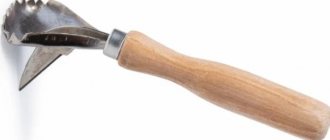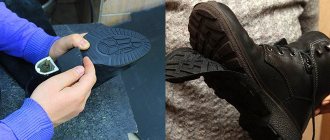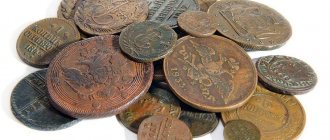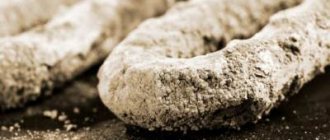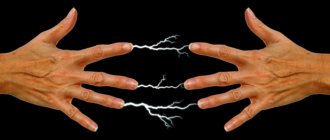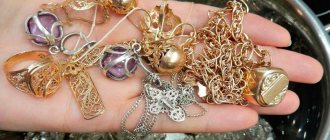For pickling
This seafood is a good option for salting. It is possible to brine both a freshly caught and a frozen carcass, the outcome is identical. Housewives initially freeze the fish because it becomes pleasantly tender.
It is advisable to buy whole trout before cutting them at a retail outlet:
- the trout should look freshly caught in appearance;
- when the tail part is dry, the tip is rounded - it means seafood, it has been lying around for a long time;
- the scaly layer is intact, without damage - but when present, this is a consequence of improper transportation;
- the trout itself and its meat are elastic, after pressing there are no holes left for us and no liquid appears;
- the veins are light in color, and the meat has a pleasant, delicate color.
The eyes should be clear, not cloudy. It is advisable to buy such seafood from reliable retail outlets. Large hypermarkets with a wide range and systematic delivery of products.
pixabay.com
If you bought a whole carcass for salting, you will need to cut it up:
- Wash the trout, carefully remove all fins.
- Remove the scaly layer. For quick processing, you need to place the carcass under running hot water for a while.
- Remove the lower part, cut off the head, remove the gills. Carefully cut out the fatty underbelly, and prepare a tender and aromatic fish soup from it.
- Cut the fish, following along the back, at the same time removing the spine and all the ribs.
pixabay.com
Preparing the grill
Fish, like shish kebab, is cooked on the hottest coals possible. The heat will quickly warm the carcass and create a crispy crust. Finding out when to place fish on the grill is simple: the coals are covered with a white coating, and it is impossible to hold your hand over the grill (as far as the heat is felt). Cooking over an open fire is not recommended because the fish will not heat up evenly.
Cook with dry hardwood wood or prepared charcoal. Light with wood chips or paper. Lighter fluid has an unpleasant odor that will permeate the fish, so it is best not to use it.
The grate must be clean, otherwise the stuck pieces will start to burn along with the fish. It is better to heat the old grate.
On your ear
This seafood is delicious in any form. For fish soup, it is possible to use only the backbone, heads and lower parts, cutting them off from the trout after removing the scaly layer. The gills need to be removed from the head, because a lot of dirt accumulates in them, and the taste and smell of the organs can spoil the ear. All remaining parts of the head can be eaten and can be easily chewed after boiling.
It is still possible to cut off belly strips from trout for soup, but usually they are left. Regular steaks are prepared from gutted fish. Here this seafood with skin and without a head is cut crosswise with a knife.
Steaks can also be cut crosswise from a whole fillet into wide strips. This way the fillet pieces will be boneless. If there are rib bones left on the meat, it is easy to remove them by hooking them together with the film in the abdomen with a thin, sharp knife. Next, if desired, you can separate a piece of fillet from the skin.
Knife with a short handle
To prevent the scales from scattering in all directions when cleaning with a kitchen knife with a short handle, the fish can be kept in water by placing it in a sink or basin. The carcass should be held by the tail while cleaning.
The process should be carried out without haste, making small movements in the direction from the tail to the head. The scales of a trout are easily separated from the skin, but they “sit” more firmly on the belly.
You can wash off the peeled scales from time to time to see the places where they still remain (identify by their shine). You may need another tool to continue the process.
For fillet
Once the previous steps have been successfully completed, it is possible to separate the meat from the bone. This process is also carried out as needed and depends on the size of the trout.
If the carcass is small in size, then initially it is necessary to remove the skin from it, then remove the bones. To clean the carcass from the skin, you need to remove it, like a stocking, starting from the head. After removing the skin, you can begin to separate the fillets. More often it is simply cut, starting from the ridge, making an incision along the back, then pushing the knife under the ribs, trying not to cut them. Then you need to cut the fillet from the tail. As a result, you will get 2 parts, one of which is finished fillet meat, and the second with the spine. With the second half you need to repeat the manipulation.
It will not be possible to remove the skin from a large carcass with a stocking, because of this, it is first necessary to cut the fillet from the bones. After there are two fillets with skin, the latter must be removed. Here you will need a sharp knife, preferably its blade is longer than the width of the carcass. You should place the fish skin-side on a board and slowly cut the fillet from the skin, controlling the procedure so that there is not a lot of meat left on the skin.
pixabay.com
How to skin fish and remove bones?
Most methods of cooking trout do not require this.
But there are several recipes that call for this.
First you need to clean and gut the fish. Then you can begin this process. Before doing this, do not forget to rinse the trout again under running water.
Then you need to remove the tail, fins and head. Next is a longitudinal cut on the back of the fish. It must be deep. Through it the spine and bones are removed.
Then they run their finger over the meat. This is done in order to detect the remaining bones. They can be removed using tweezers.
And in order to remove the skin from the meat, you need to make an incision. Moreover, the knife should be at an angle to the table. The fish must be held. And then the meat is cut from the skin.
As a rule, this method is necessary when preparing rolls or salads. Also, such small pieces of fish meat are used for other dishes.
Don’t rush to throw away the head, tail and spine just yet. You can cook delicious fish soup from them.
From scales
This seafood is covered with a slimy layer, so before you start cleaning, it should be rinsed. To prevent the trout from slipping out of your hands, it is advisable to rub it with coarse salt. To clean and cut trout, you will need the following tools:
- tablet;
- sharp knife;
- gloves;
- metal grater for dishes;
- tea spoon.
Many fishermen first remove the entrails of the seafood. This is done with a knife, cutting the abdominal cavity from the tail to the top. Next, the giblets are removed and the films are removed. Use a spoon to remove the blood. The gills are removed because they contain harmful substances. If the head is not required, it can be removed and discarded. When caviar is found, it is salted. All side fins are cut off, and those on the ridge are completely removed.
Some housewives wonder whether it is necessary to clean fish from scales. This needs to be done. A serrated knife or a dish grater will do. The scaly layer should be cleaned very carefully so as not to spoil the skin, from the bottom to the head. Can be cleaned in water or in a bag. This way the scales don't scatter all over the kitchen. The skin on the belly is lighter, so the main thing is not to miss the scales. Their presence can be checked with your finger. If you find scales in a cooked dish, it’s quite unpleasant, that’s why you need to clean them. Next, you need to rinse the trout and start cooking.
Caviar separation process
It is also necessary to separate the caviar from the film. You need to get the caviar, prepare a glass of hot water, about fifty degrees, salt, and a bowl.
In a bowl, mix hot water with a tablespoon of salt and stir until the salt dissolves. Now you can take the caviar and put it in a container with a salty solution for about thirty minutes. After half an hour, you need to put the caviar in a colander and let the water drain. After this, separate the film (it comes off easily).
Gutting
Usually such fish are sold already gutted. There are also whole trout, in which case they need to be gutted. It is no more difficult to process such a product from giblets than any other.
It is necessary to cut the belly along the body along the entire length of the fish. Having expanded the edges, it is necessary to pull out all the internal organs. If there is caviar in the abdominal cavity, it can be salted, everything else should be thrown out. It is also necessary to remove the films that cover the abdomen.
If you need a whole trout, you need to remove the gills from the head. They contain many harmful substances for the human body and will definitely spoil the dish with an unpleasant aroma and taste. If the dish does not require a whole fish, then the head is cut off and thrown away.
Some dishes require the presence of fins for beautiful presentation, otherwise it is also advisable to cut them off. The side fins are simply removed; the spinal fin needs to be cut out by making cuts on both sides.
There is also a Chinese method of cutting. This is a rather unusual, but effective option. An incision is made with a knife across the belly of the fin. You need to put Chinese chopsticks into the trout's open mouth. You will need to insert one stick deep so that it passes over the gills, which are pressed, and the stick is inserted into the hypobranchial opening.
Then they are pushed through to the incision on the abdomen. Similar manipulations are performed with the 2nd stick. The ends on the head side are clamped and twisted like a corkscrew a couple of times. Afterwards, the giblets with gills are carefully pulled out. Wash the fish with water and start cooking.
Why do the gills need to be removed?
The answer to this question is simple, but first let us note that it is not always necessary to get rid of the gills. When it comes to river and lake fish, as a rule, you should protect yourself from the smell of mud. It is in the gills that there is a source of unpleasant odor, which can also affect the taste of the finished dish. Therefore, when preparing perch, silver carp, and pike, it is always necessary to remove the gills.
The gills of sea fish can also add an unpleasant aftertaste to food. If you plan to bake whole fish or put heads in fish soup, it is imperative to get rid of the gills. They may also contain all kinds of debris: duckweed, fragments of aquatic plants and even living creatures.
When boiled, the gills give the broth a disgusting, unappetizing hue and completely unnecessary odors. This is the answer to the question of why remove the gills from fish for soup.
Gill removal process
Our step-by-step instructions will help you overcome any gills. The process should begin after cleaning the fish from scales. Let's look at how to remove gills from fish:
- Turn the carcass with its belly towards you. Bend the operculum on one side and make an incision near the frontal attachment of the gill arch. To do this, you can use either a sharp knife or culinary scissors.
- Do the same with the second gill arch.
- Bend back the frenulum that connects the gill arches under the fish's mouth. Insert a sharp knife through and cut off both gill arches from the frenulum.
- Carefully remove the gills.
- Rinse the carcass under running water, exposing the place where the gill arches were attached to the stream.
That's all the wisdom. If you first thought about how to remove gills from a fish, you most likely imagined a complex and time-consuming process. Perhaps on the first try he will turn out like this. But with a little practice, you can easily cope with the task.
Precautionary measures
Before removing the gills from a fish, pay attention to the following. Some species have acquired many protective devices
For example, pike perch, in the process of evolution, grew sharp spines on their fins. The gills may also have spiny edges.
If you try to pull out the gills by hand, especially when cleaning large fish, you risk injuring yourself. To prevent this from happening, inspect the surface and do not jerk. You can even use ordinary pliers to remove the gills, but you need to pull not from the middle of the arc, but from the very edge. Otherwise, the gills will tear, and you will have more work: getting rid of torn flaps is more difficult than getting rid of a whole organ.
Processing frozen fish
Frozen fish is much easier to cut than freshly caught fish. Therefore, most housewives prefer to put newly purchased seafood in the freezer and start cutting it only after a couple of hours.
Procedure for preparing frozen trout:
- The seafood is taken out of the freezer and transferred to a deep container with ice water. The main thing to remember is that it is not recommended to defrost trout or fillets in warm or hot water.
- After about 15 min. start cleaning the fish. It is rubbed with coarse salt so that it does not slip on the cutting board.
- At the initial stage, the scaly layer is cleaned off. Because it is chained with ice crystals, processing is quite simple and quick.
- Next, the fish is cleaned using one of the following methods (depending on the dish that will be prepared from the trout).
Having figured out how to properly gut and clean such fish, this task will no longer be a burden.
There won't be a lot of time wasted. And the prepared trout culinary masterpieces will delight your loved ones with their taste and aroma. Did you like the recipe?
Trout value
Trout includes three genera of salmonids: Pacific, Atlantic, and char of the subfamily Salmonidae. Many species are migratory: they spawn in fresh water and then go to the sea, where they change color and gain weight, but return to their native places to spawn. The color of trout depends on its habitat, the transparency and composition of the water, time of year, weight, and weather conditions. There are fish of olive shades, green, golden, with different color saturations and dark spots on the body and fins. Rainbow trout, which has become famous throughout the world, has a bright stripe along its sides. The weight and size of the fish depends on the habitat:
- river usually reaches 1–3 kg and has a length of up to 50 cm;
- brook can grow up to 1 m and weighs about 17 kg;
- The length of sea trout species varies between 70–100 cm, some individuals can reach 8–12 kg, but this is very rare.
Trout is a commercial fish; it is bred in factories and farms using all modern methods. Thanks to this, we see fish of the most varied colors on supermarket shelves - all shades of the gradient from milky white to rich red. It has a delicate taste and aroma due to the intermuscular layer of fat. Trout meat is an important component of a healthy and dietary diet:
- its energy value is 109 kcal;
- regular consumption of food promotes longevity and rejuvenates the body, since fish contains Omega-3 polyunsaturated acids (the human body cannot produce them on its own, but needs these elements constantly);
- fish is rich in vitamins A, C, D, E, and contains microelements that are incredibly beneficial for the cardiovascular system and brain.
Depending on the habitat of the fish, its color and the color of the meat change.
Vitamin content in 100 g of trout - table
| Vitamin A1 (retinol) | 19 mcg |
| Vitamin B1 (thiamine) | 0.123 mg |
| Vitamin B2 (riboflavin) | 0.105 mg |
| Vitamin B3 (niacin) | 5.384 mg |
| Vitamin B5 (pantothenic acid) | 0.928 mg |
| Vitamin B6 (pyridoxine) | 0.406 mg |
| Vitamin B9 (folic acid) | 12 mcg |
| Vitamin B12 (cyanocobalamin) | 4.45 mcg |
| Vitamin C (ascorbic acid) | 2.4 mg |
| Vitamin D | 1.05 mg |
Mineral content in 100 g of trout - table
| Potassium | Calcium | Magnesium | Sodium | Phosphorus | Iron | Manganese | Copper | Zinc | Selenium |
| 481 mg | 67 mg | 31 mg | 39 mg | 271 mg | 0.7 mg | 158 mcg | 109 mcg | 1.08 mg | 12.6 mcg |
How to cut
Surprisingly, there must be a certain system here too. I don’t claim that I am the standard and know best how to fillet, but I really like this method for its simplicity and low amount of waste. Let's get started:
First, the fish must be defrosted. For this I use a bowl made of food-grade aluminum. Of course, it is not particularly presentable, but it is light and very comfortable. After the ice has melted, do not cut it immediately; let it sit for a few more hours until the excess blood drains out along with the water. Then rinse in plain water, preferably cold, of course. The fish will no longer be uncomfortable and slippery, which will help us in the future.
Removing the scales
Now we clean off the scales from it. This can be done with an ordinary knife, but you can also use any device, of which there are already enough offered in stores. For convenience, I recommend wrapping it in a paper napkin, then your hand will not slip off the tail and the scales can be cleaned conveniently and quickly. In general, little things like this help a lot when working with fish and you don’t have to think about how to cut salmon.
And rinse again in running water. This is necessary in order to wash away any remaining scales and mucus. The skin becomes clean and shiny.
Butchering
Now let's mentally divide it into two parts. The first one, with ribs, will be used for the second course, and the second one, the tail one, will be used for preparing an appetizer. But don't cut it in half right away, that's a mistake. Then it will be inconvenient to cut smaller pieces. We start from the front, cut across the body, with a sharp knife, into slices about 2 - 2.5 centimeters thick. These will be the steaks that we use for cooking. As a rule, I get 6 – 8 pieces depending on the size of the fish. This is how you can fillet salmon.
What are the contraindications?
Despite the fact that trout is a product that is rich in nutrients, there are a number of limitations.
So, pregnant girls and those who are breastfeeding should not eat this fish.
Trout meat is considered quite fatty. Therefore, people with gastrointestinal problems are also not recommended to eat it. There will be no benefit from this product for those who suffer from high blood pressure and cardiovascular diseases.
Before eating the head of a fish, the gills should be removed. Because they are the warehouse of harmful substances. If you still don’t do this, then consider that the taste of the food is spoiled.
Remember that the process of cleaning trout is no different from cleaning any other fish. You need to pay attention to every stage. If you do everything right, you will end up with a good and tasty dish. Therefore, be sure to clean the fish well before cooking.
Remember that the taste of a dish largely depends on the quality of the original product. Therefore, when purchasing, be more careful in choosing fish. Do not purchase products from unfamiliar places or from hands. Be sure to look at the expiration date.
If you follow these simple tips, your family will receive a wonderful dish for dinner or lunch.
Trout meat is a delicacy product. Tender, soft, quite fatty, it is good in any form. Trout soup, baked, smoked, grilled trout, with lemon and ginger - the meat just melts in your mouth. Like any fish, trout is much healthier than meat and is easier to digest by the body, literally healing some organs. The only problem is that, like any fish, it needs to be cleaned and cut before cooking.
